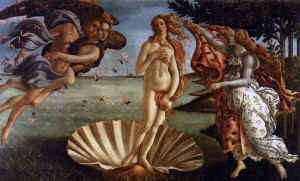 Hello to everyone! Have you ever thought about the ideal lady? What does “ideal” mean for you? Does it come on physical beauty, or are you looking for an individual, vivid person with hobbies, interests and tastes? Would she be cultivated and intelligent, or better look like beauty pageants? Do you know exactly what kind of lady you want? Would your Russian lady be a cooking-and-cleaning expert, well-paid business lady, cheerful and sexy “girl to next door”? But however that may be, there is no doubt that the ancient Greeks and Romans have surely had their ideal lady, the clear example of womanhood at its best. It comes to the Venus de Milo.
Hello to everyone! Have you ever thought about the ideal lady? What does “ideal” mean for you? Does it come on physical beauty, or are you looking for an individual, vivid person with hobbies, interests and tastes? Would she be cultivated and intelligent, or better look like beauty pageants? Do you know exactly what kind of lady you want? Would your Russian lady be a cooking-and-cleaning expert, well-paid business lady, cheerful and sexy “girl to next door”? But however that may be, there is no doubt that the ancient Greeks and Romans have surely had their ideal lady, the clear example of womanhood at its best. It comes to the Venus de Milo.
 Dated back to 130 B.C., this perfect marble statue was discovered on April, 8, 1820, on the Aegean island of Melos in Greece, when local farmers were looking for stones for the house-building. The statue of Venus represents Aphrodite, the ancient Greek goddess of beauty and love; Venus is thought to be its later equivalent in ancient Rome. The Venus de Milo is considered to be created by Alexandros of Antioch, ancient Greek poet and sculptor. Nowadays it can be seen in the museum of Louvre, Paris, France.
Dated back to 130 B.C., this perfect marble statue was discovered on April, 8, 1820, on the Aegean island of Melos in Greece, when local farmers were looking for stones for the house-building. The statue of Venus represents Aphrodite, the ancient Greek goddess of beauty and love; Venus is thought to be its later equivalent in ancient Rome. The Venus de Milo is considered to be created by Alexandros of Antioch, ancient Greek poet and sculptor. Nowadays it can be seen in the museum of Louvre, Paris, France.
 There are some interesting facts that are associated with this world famous sculpture. Well, it is made of marble, so it is flawless. It had cost 1000 Franks to buy the sculpture for the French officials in 1820. Barefooted and naked, she continues to depict a masterpiece of womanhood. Both her arms are missing, but there is a mystery why, so it has paved the way for numerous jokes and anecdotes. It has inspired so many artists, poets and musicians – suffice it to recall Bon Jovi’s song “Queen of New Orleans” or “Carry on Cleo” the movie. Venus de Milo is thought to be one of the most popular exhibit pieces at the Louvre together with the Leonardo de Vinci’s Mona Lisa. But there can be no doubt that the statue is one of the most remarkable masterpieces of cultural heritage for mankind.
There are some interesting facts that are associated with this world famous sculpture. Well, it is made of marble, so it is flawless. It had cost 1000 Franks to buy the sculpture for the French officials in 1820. Barefooted and naked, she continues to depict a masterpiece of womanhood. Both her arms are missing, but there is a mystery why, so it has paved the way for numerous jokes and anecdotes. It has inspired so many artists, poets and musicians – suffice it to recall Bon Jovi’s song “Queen of New Orleans” or “Carry on Cleo” the movie. Venus de Milo is thought to be one of the most popular exhibit pieces at the Louvre together with the Leonardo de Vinci’s Mona Lisa. But there can be no doubt that the statue is one of the most remarkable masterpieces of cultural heritage for mankind.
